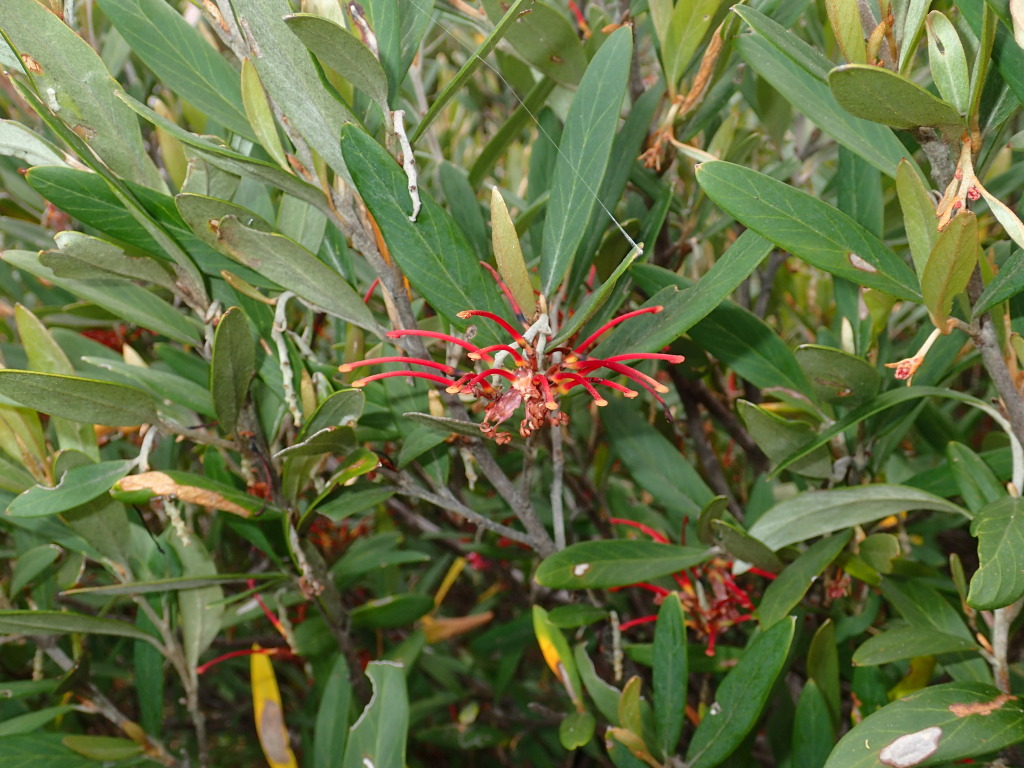Grevillea victoriae subsp. victoriae
Branchlets densely subsericeous. Leaves usually narrowly elliptic to lanceolate, (30–)40–120(–200) mm long, (8–)10–25(–50) mm wide; upper surface glabrous, dull, dark green, sometimes with greyish hue; margins shortly recurved; leaf length to width ratio (2.85:1–)4:1–5:1(–6:1); leaf upper surface smooth, without minute asperities, dull; lower surface densely sericeous or subsericeous, lateral veins conspicuous, reticulum absent. Conflorescences simple to 4-branched, simple 69 %, 2-branched 20 %, 3-branched 9 %, 4-branched 2 %. Floral rachises (17–)40–90 mm long. Flowering has been recorded primarily Oct.-Feb.
GipP, EGU, HSF, HNF, MonT, VAlp. Grevillea victoriae subsp. victoriae is endemic to subalpine and alpine region of Victoria. Grevillea victoriae subsp. victoriae occurs at altitudes between 1400-1900 metres, usually in Eucalyptus pauciflora woodland, often on boulder-strewn sites.
 Spinning
SpinningSynonyms
Stajsic, V.; Molyneux, W.M. (2006). Taxonomic studies in the Grevillea victoriae F.Muell. species complex (Proteaceae: Grevilleoideae) I. Descriptions of nine previously segregated, and three new taxa.. Muelleria 22: 22–76.

